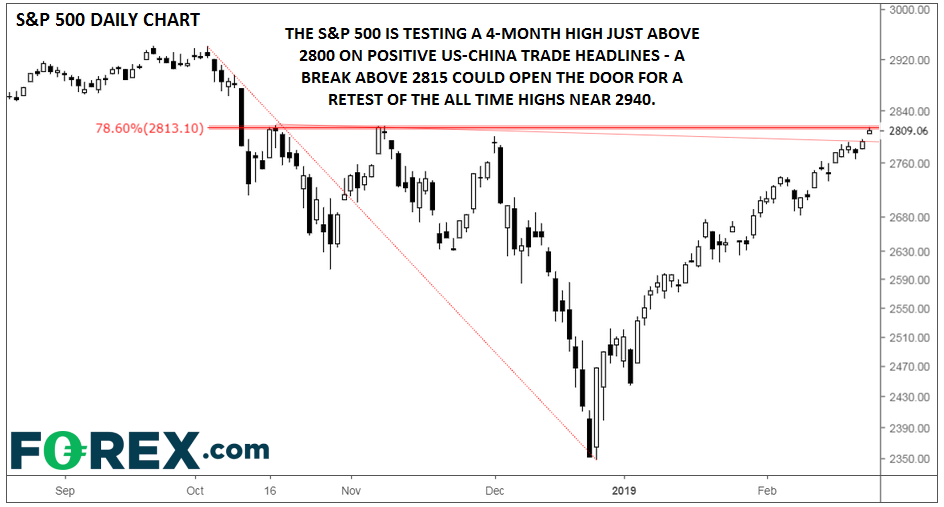Traders have adopted this optimistic outlook, driving the S&P 500 up to test its four-month high, notes Matt Weller.
After two weeks of constructive trade talks on both sides of the Pacific, we suggested that traders were “expecting the increase in tariffs will be delayed — with some sort of agreement following in either late March or early April.” On Sunday night, President Trump confirmed that he would be delaying the tariff escalation and planning another summit between President Xi and himself.
Some analysts have noted that the Unites States and China still have significant differences on structural issues including intellectual property rights and technology transfers, but ultimately, both sides apparently want to make a deal. President Xi is eager to address China’s economic slowdown in any way possible, while Trump needs a quick win after his dealmaker reputation took a hit around the prolonged government shutdown and failure to secure funding for a border wall.
Much like the United States-Mexico-Canada Agreement (USMCA), which is merely a rehash of NAFTA with a few small tweaks around the edges, Trump may be keen to strike a U.S.-China deal that he can pitch as a breakthrough, even if it doesn’t fully address some of the thornier issues.
Traders have adopted this optimistic outlook, driving the S&P 500 up to test its four-month high. After breaking through its (slight) descending trend line, the index is testing its 78.6% Fibonacci retracement in the 2815 area. After rising eight of the last nine weeks, the S&P 500 could take a bit of a breather here. That said, if the index can break conclusively above 2815, there’s little stopping bulls from making another run at the record highs near 2940.

Source: TradingView, FOREX.com


















